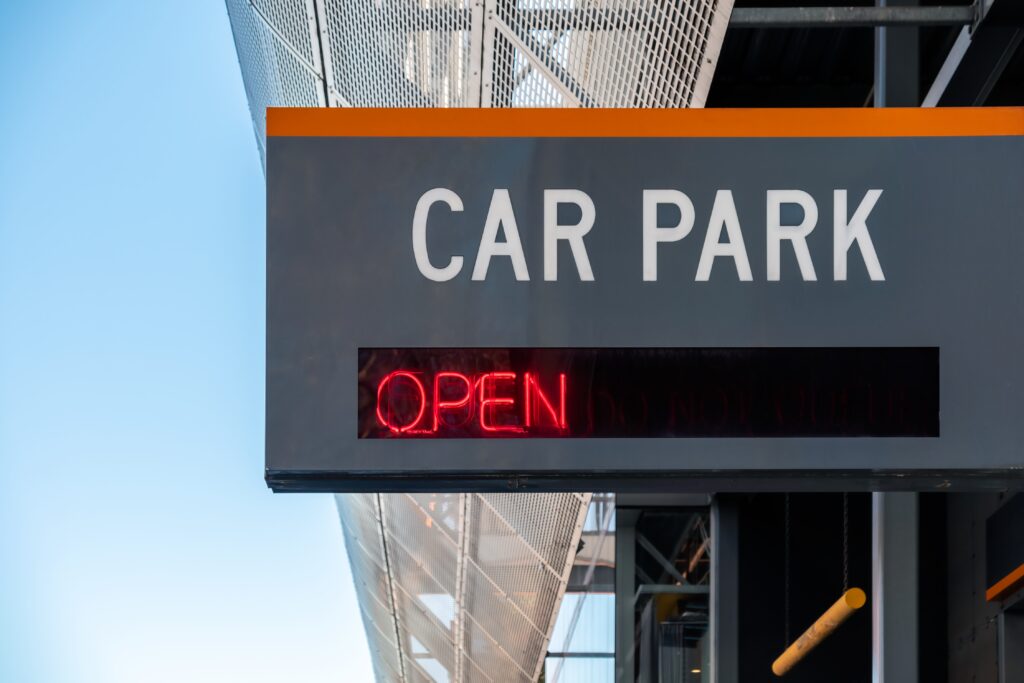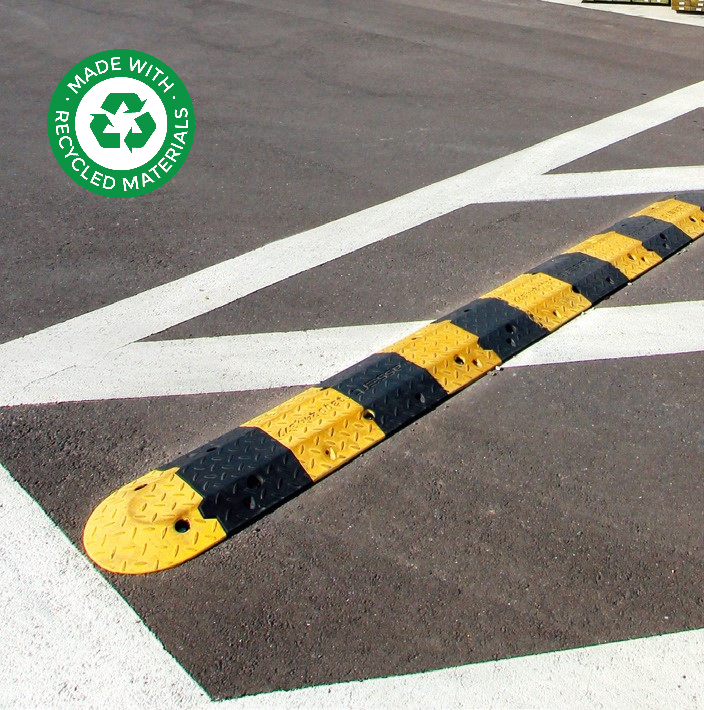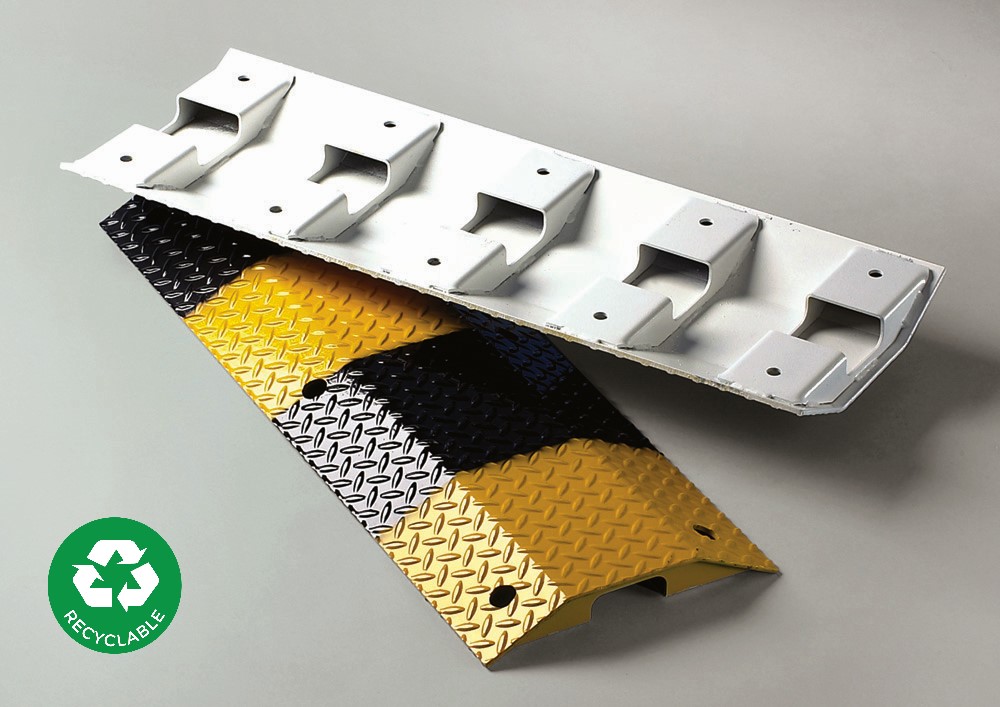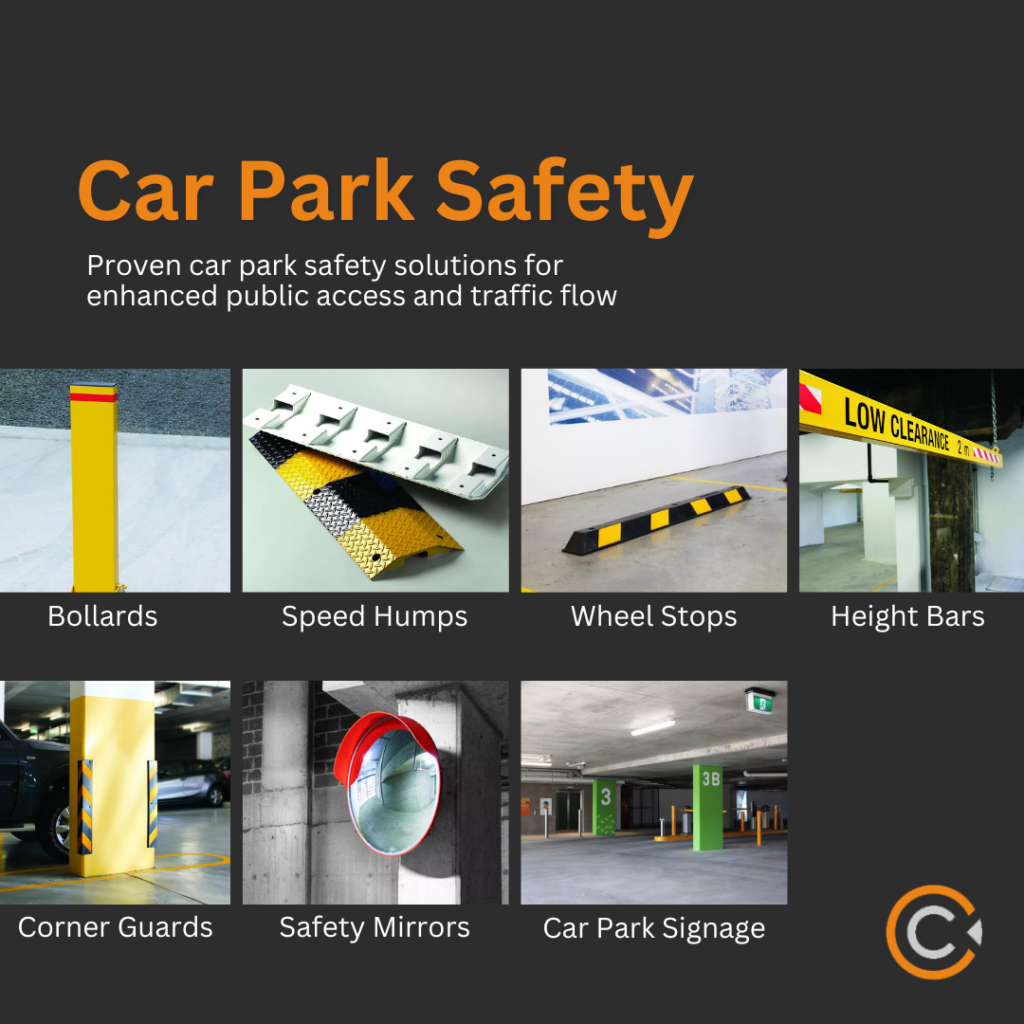Ensure safety, legal compliance, and long-term cost savings for your car park project
Used in conjunction with other road and car park safety measures, speed humps are essential for ensuring the safety of drivers, cyclists, and pedestrians. The primary purpose of speed humps is to slow drivers down while enhancing traffic flow and maintaining the safety of other road users and pedestrians.
Speed humps are commonly placed in controlled-speed and high-risk areas such as near entrances and exits, pedestrian walkways, busy intersections, and areas with low visibility or impending hazards. By enforcing reduced vehicle speeds on shared roads and in car parking facilities, speed humps serve as a crucial measure for preventing and minimising the risk of collisions and accidents.
In addition to complying with local government regulatory requirements, Australian Standards AS 2890.1:2004 details minimum legal requirements for speed humps in off-street car parking facilities. This covers private property parking, such as residential and employee parking, and public parking spaces, including but not limited to shopping centres, hotels, hospitals, and other similar facilities.
In this article, we’ll go over the Australian Standards for speed humps, including design and installation guidelines for car parks, to ensure your legal compliance.
Importance of Australian Standards for Speed Humps and Potential Cost-Saving Benefits
Aside from enhancing car park user safety and promoting efficient traffic flow, installing speed humps to control speed limits can also provide long-term cost savings.

By encouraging drivers to be more aware of their surroundings and deterring reckless driving, reduced vehicle speeds also mean less wear and tear on the pavement and a reduced likelihood of damage to surrounding structures. This helps minimise unnecessary car park maintenance and repair costs.
Building professionals, property owners and facility managers have a duty of care to ensure the safety of drivers and pedestrians using car parks. By installing and maintaining speed humps in compliance with the Australian Standard guidelines, the relevant stakeholders can mitigate the risk of accidents and avoid costly legal claims due to negligence or non-compliance.
Compliance Guidelines for Australian Standard: AS 2890.1:2004 Off-Street Parking
AS 2890.1:2004 Compliant Speed Humps for Car Parks
As outlined by the AS 2890.1:2004, car park road humps (also commonly referred to as speed humps) must be installed where positive speed control is necessary.
Depending on their location and the range of speed reduction required, there are generally two types of road humps used for car parks.
Type 1
- Intended for use on long aisles and circulating roadways in large outdoor car parks.
- To reduce speeds to about 25km/h or less.
Type 2
- For installation in relatively confined areas of covered and multi-storey car parks.
- To reduce speeds to about 30km/h or less.
However, if more speed control is required for more extended roadways, the larger road hump specified in AS 1742.13 (for local area streets) may be more appropriate.
AS 2890.1:2004 Speed Hump Dimensions & Specifications
Type 1
- 75mm maximum height from road level
- 2500mm in total width
Type 2
- 25 to 75mm maximum height (H) from road level, with a 1:2 ramp angle
- 100 to 150mm in width for the raised flat-top cross-section and an additional (2 x H) mm on either side for the road level width
- Must have alternating parallel white or yellow stripes markings of 250mm wide
AS 2890.1:2004 – Installation Guidelines for Off-Street Car Parking Speed Humps
Location of car park speed humps
- The humps should be located clear of intersections and curved roadways.
- The humps should not impede any pedestrian or wheelchair traffic.
- At least 1m of travel space is required on either side of the hump when placed near an accessible travel path provided for people with disabilities.
Required spacing of speed humps
- Type 1 road humps should be spaced apart by a minimum of 30m along a single aisle or roadway.
- Type 2 road humps should be spaced apart by a minimum of 10m along a single aisle or roadway.
- A maximum spacing of 50m for roadways that require a continuation of controlled speed.

Additional safety measures & considerations
- If using the larger road hump specified in AS 1742.13, additional white or yellow hump stripe markings are required.
- In low-lit outdoor locations, raised reflective pavement markers may also be required in addition to the hump stripe markings.
- A W5-10 hump warning sign should be used if the road hump is not sufficiently visible in time for drivers to slow down.
For your peace of mind, Classic Architectural Group supplies and installs AS 2890-compliant speed humps for car parking projects Australia-wide. Our expert team can advise you on suitable products and ensure efficient lead times to meet your requirements.
For more information, you can also read our blog on car parking requirements per Australian Standards, which provides a holistic overview of the relevant guidelines and evolving trends.
Recommended Maintenance of Speed Humps in Car Parks
While the AS 2890.1:2004 does not detail specific maintenance requirements for car parking speed humps, here are some general guidelines:
- Routine cleaning: Clean any debris, such as leaves, dirt or litter, from speed humps to minimise obstruction and maximise visibility.
- Schedule regular inspections: Check for any signs of damage or wear and tear, such as cracks or loose fittings.
- Prompt repairs: If any damage is found during an inspection, organise for a repair or replacement as soon as possible.
Regular inspection and maintenance of any speed hump installations ensure they’re fit for purpose and ongoing compliance with the Australian Standards.
Classic Architectural Group Offers AS 2890 Compliant Speed Humps for Your Car Parking Projects
Complementing our comprehensive range of architecturally designed stair and floor safety solutions, Classic Architectural Group offers proven car park safety products for enhanced public access and traffic flow.
Designed for off-street parking facilities, we currently offer two options for speed humps:

Classic Economy Rubber Speed Hump
This sturdy rubber speed hump is a great economical choice for bitumen and concrete applications in high-traffic areas. Compliant with AS2890.1-2004, it comes with interlocking sections and inbuilt reflectors to provide high visibility and maximum durability.

Classic Heavy Duty Steel Speed Hump
A virtually indestructible speed hump with more than four times the load-bearing contact area, purposefully designed for heavy vehicle applications. With a built-in bridge to accommodate hoses and cables, this heavy-duty steel speed hump comes complete with all fixings and is AS2890.1-2004 compliant.
Trusted by Australia’s leading building professionals for over 40 years, some of our recent projects featuring Classic’s speed hump installations include:
With supply and installation expertise Australia-wide, we can enhance your project with complete car parking solutions, including the following:

Prioritise Your Project’s Compliance with Classic Architectural Group’s Expertise in Public Safety & Access
Empowering building professionals to create better shared spaces and safe access for all, Classic Architectural Group can enhance your projects with quality solutions from custom design to supply and installation. A 100% Australian-owned business with local manufacturing and nationwide support, you’ll enjoy guaranteed supply and fast turnarounds whenever you choose us.
To see more of our car park, stair, or floor safety products in action, explore our latest projects and simply filter by industry, location, or product type for specific case studies.
Need more information? You’re always more than welcome to contact our friendly team for a quick quote, product sample, or tailored consultation. We’re here to help you get a step ahead!






